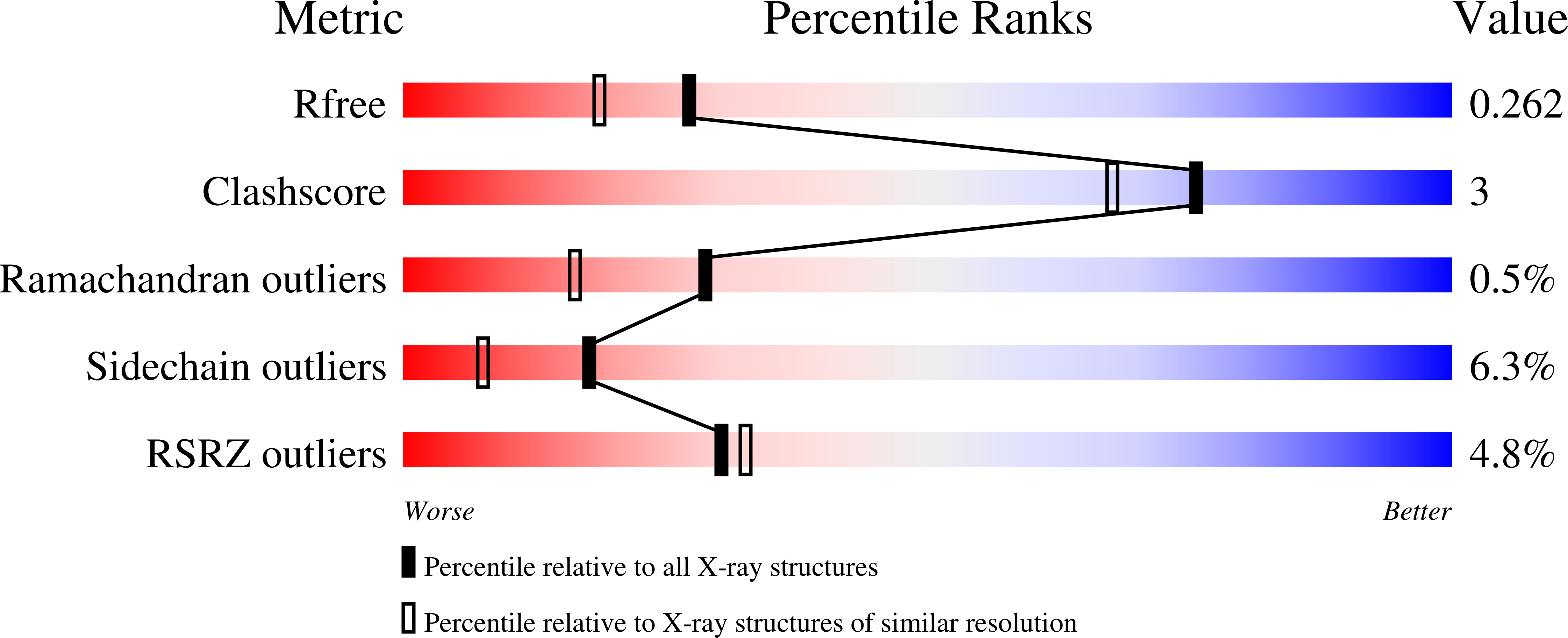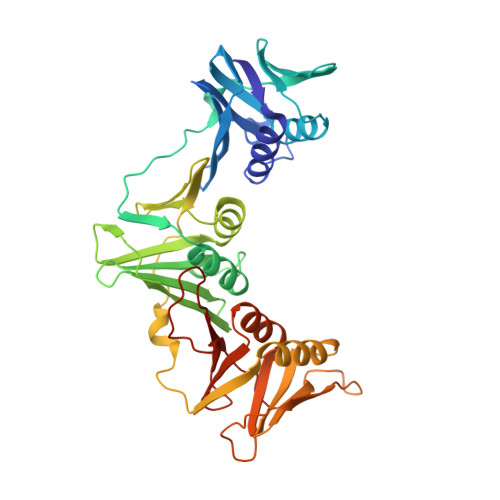Screening of E. coli beta-clamp Inhibitors Revealed that Few Inhibit Helicobacter pylori More Effectively: Structural and Functional Characterization.
Pandey, P., Verma, V., Dhar, S.K., Gourinath, S.(2018) Antibiotics (Basel) 7
- PubMed: 29324718
- DOI: https://doi.org/10.3390/antibiotics7010005
- Primary Citation of Related Structures:
5FVE, 5FXT, 5G4Q - PubMed Abstract:
The characteristic of interaction with various enzymes and processivity-promoting nature during DNA replication makes β-clamp an important drug target. Helicobacter pylori ( H. pylori ) have several unique features in DNA replication machinery that makes it different from other microorganisms. To find out whether difference in DNA replication proteins behavior accounts for any difference in drug response when compared to E. coli , in the present study, we have tested E. coli β-clamp inhibitor molecules against H. pylori β-clamp. Various approaches were used to test the binding of inhibitors to H. pylori β-clamp including docking, surface competition assay, complex structure determination, as well as antimicrobial assay. Out of five shortlisted inhibitor molecules on the basis of docking score, three molecules, 5-chloroisatin, carprofen, and 3,4-difluorobenzamide were co-crystallized with H. pylori β-clamp and the structures show that they bind at the protein-protein interaction site as expected. In vivo studies showed only two molecules, 5-chloroisatin, and 3,4-difluorobenzamide inhibited the growth of the pylori with MIC values in micro molar range, which is better than the inhibitory effect of the same drugs on E. coli . Therefore, the evaluation of such drugs against H. pylori may explore the possibility to use to generate species-specific pharmacophore for development of new drugs against H. pylori .
Organizational Affiliation:
School of Life Sciences, Jawaharlal Nehru University, New Delhi 110067, India. preet.satya@gmail.com.















